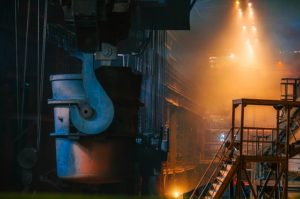 The Philippine manufacturing sector continued to post double-digit growths in July 2018, its seventh consecutive month of positive performance, according to the Philippine Statistics Authority (PSA).
The Philippine manufacturing sector continued to post double-digit growths in July 2018, its seventh consecutive month of positive performance, according to the Philippine Statistics Authority (PSA).
According to PSA’s Monthly Integrated Survey of Selected Industries (MISSI) for July 2018, the Volume of Production Index (VoPI) and Value of Production Index (VaPI) rose by 11.8% and 12.2%, respectively.
The July 2018 results were a turnaround from the 5.1% and 6% decline of VoPI and VaPI, respectively, recorded in the same period last year.
The growth in VoPI was due to the positive performance of seven out of 14 major sectors, namely: fabricated metal products (39.7%), petroleum products (38.3%), textiles (33.5%), beverages (21.8%), miscellaneous manufactures (19.9%), basic metals (19.1%), and machinery except electrical (12.1%).
VaPI, meanwhile, was boosted by significant improvement in the production performance of 15 major sectors, which included petroleum products (66.5%), textiles (39.1%), beverages (38.3%), basic metals (29.9%), miscellaneous manufactures (24.7%), machinery except electrical (19.1%), paper and paper products (15.4%), and electrical machinery (10.3%).
“We expect this strong performance of the manufacturing sector this year as we continue to see stable domestic demand, as well as robust investments due to heightened infrastructure projects and consumer spending,” Socioeconomic Planning secretary Ernesto M. Pernia said in a statement.
Growth in the food subsector was due to strong household consumption and efficient market operations. Food manufacturing value was mainly driven by increases in the production value of animal feeds and sugar.
The double-digit growth in the value of refined petroleum products continued to push the overall increase in the value of petroleum products in July.
Meanwhile, growth in the production volume of construction-related manufactures slightly slowed down in July with slight declines in cement production and miscellaneous non-metallic minerals. Volume of production of glass and basic metals, however, posted double-digit growth. Net sales of non-metallic mineral products and basic metals also rose.
Growth in the production volume of most export-oriented products was sustained in July 2018. The growth in petroleum products, textile, beverages, and non-electrical machinery offset the declines in the production volume of tobacco, footwear and wearing apparel, wood products, and furniture and fixtures.
High importation of raw materials and intermediate goods supported the increase in production levels of export-oriented goods.
Production and sales of transport equipment recovered at the beginning of the second semester of 2018 after two consecutive months of contractions. The improvement is consistent with car manufacturers’ improved outlook on automotive sales.
“This upward growth trajectory is likely to be sustained. And the whole of government continues to push for measures improving efficiency and innovation in the production sector in order to sustain this robust performance in the second half of the year,” Pernia said.
These measures include encouraging competition in the local logistics sector to translate to better services and lower prices for customers; effective internationalization of micro, small, and medium enterprises; and improvement of local government units’ efficiency in providing business-related services.





